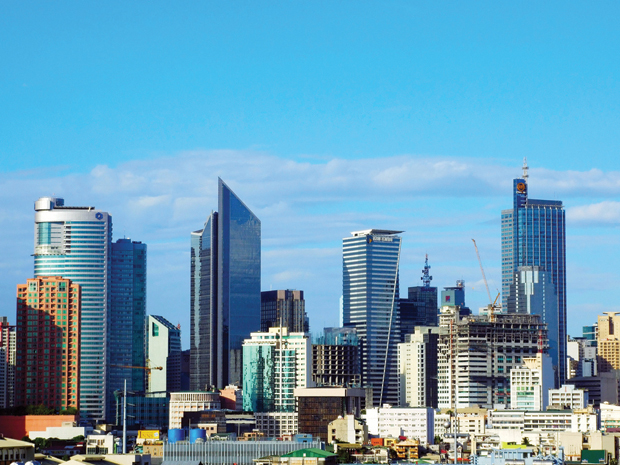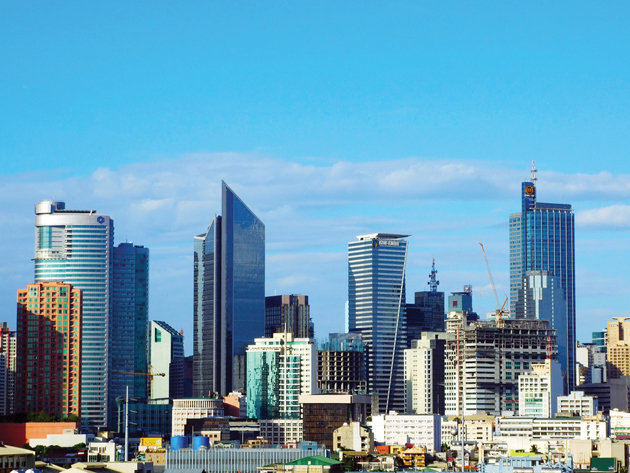
A RISING ECONOMY. For international observers, the Philippines, with its improving economic performance, is no longer the “sick man” of Asia. Photo by Jon Manosca from Flickr (Creative Commons).
THE PHILIPPINES is now Asia’s strongest-performing economy, expert economists said.
In an interview with Bloomberg on August 9, Hong Kong-based Deutsche Bank AG Chief Economist for Asia Michael Spencer claimed, “The strongest performing economy in Asia today is the Philippines.”
From a 3.7% growth in 2011, the country’s gross domestic product (GDP) grew by 6.4% in the first quarter of 2012, second only to China’s 8.1%.
Economists anticipate that this impressive growth rate will be paralleled in the second quarter. Frederic Neumann, another Hong Kong based senior economist, was quoted in the New York Times: “We have made a very bold forecast for the Philippines, but I think justifiably so.”
High on exports
“What’s driving growth [in the Philippines] today are exports, surprisingly enough for them,” Spencer added.
A day after the interview, the National Statistics Office (NSO) released official exports data for the first six months of 2012. The said data indicated that exports reached $26.75 billion, higher by 7.68% from 2011’s $24.8 billion performance.
Despite poor external demand for Philippine exports, particularly from Europe and US, the country was still able to compensate by increasing outbound shipments to Japan.
“I suspect that this has something to do with Japan outsourcing to the Philippines after the earthquake,” Spencer said.
In 2011, Japan was the country’s leading importer of products with $8.86 billion worth or 18.5% of the Philippines’ total exports. The NSO reported that outbound shipments to Japan grew from $4.29 billion in the first half of the said year to $4.77 billion, up by 11%, this year. This seems to confirm Spencer’s conjectures.
Top Philippine exports include electronic products, apparel and clothing accessories, woodcraft and furniture, and metal components.
Other signs of growth
Last May, Moody’s Investors Service increased the Philippines’ credit ratings when it revised the country’s evaluation from “stable” to “positive.” Moody’s said that this would help increase investments in the country, inducing higher economic growth.
Romeo Balanquit, PhD, from the University of the Philippines School of Economics, said, “It’s good to see that investors are confident with our economic fundamentals because this even helps in the realization of positive predictions.” A stable financial system stimulates cash flow, lowers interest rates, further boosts investment inflow and increases demand.
Noel de Guzman, PhD, from the Economics Department of the Loyola Schools, believes that stability in the financial system would reduce bank closures, which is seen as crucial in consumer confidence.
Depositors only get a small portion of their money back whenever a bank depletes its reserves and is unable to fulfill its obligations. “Before, [the maximum deposit insurance coverage was] only P250,000 but during the Arroyo administration, that was increased to P500,000. What if you invested millions, what is P500,000?” he said.
However, several prudent steps led to the current financial assurance. Economists and investors noted the Philippines’ relatively low budget deficit of 2.6% of GDP, a gauge of overall economic performance. A low deficit-to-GDP ratio is the index of a country’s ability to pay back its debts.
Housing $70 billion in reserves and lower debt interest expenses, the Philippines has also contributed $1 billion to the International Monetary Fund to alleviate the financial burdens of the European countries that are currently in serious debt.
Signs of counter-growth
While exports do increase a country’s GDP, there is no reason to be complacent. De Guzman noted that a similar trend happened before. “In the ‘70s and ‘80s, there were episodes of trade liberalization across the third world countries because they were operating under the idea that the way to prosperity for a poor nation is through trade. But then, it never really delivered on its promise.”
Competition, he said, is also a factor. When a market is profitable, it attracts other participants to venture on the same product.
This, according to de Guzman, explains why the Philippines evolved into sending overseas workers abroad. He said that the country discovered its comparative advantage in this aspect. Among other things, Filipino workers have a good grasp of business English. “Let’s say the other third world countries start learning English, and then our advantage as service-oriented people is gone.”
Other Filipinos have argued that while the economic performance has been optimistic, the minimum wage and employment benefits of Filipino laborers remain as concerns to be addressed.
While the Philippines has been garnering praise in the international scene, many Filipinos still live with the reality of being separated from their loved ones who need to work abroad.
For Ateneo Economics Association President Julienne Lechuga, economic growth does not necessarily translate to economic development. “In theory, countries go through a natural boom-and-bust cycle and it’s only a matter of time before a country reaches that economic high point,” she said.
Lechuga further explained that reaching this point does not always mean sustainable growth, especially when sectors of various industries are underdeveloped.




